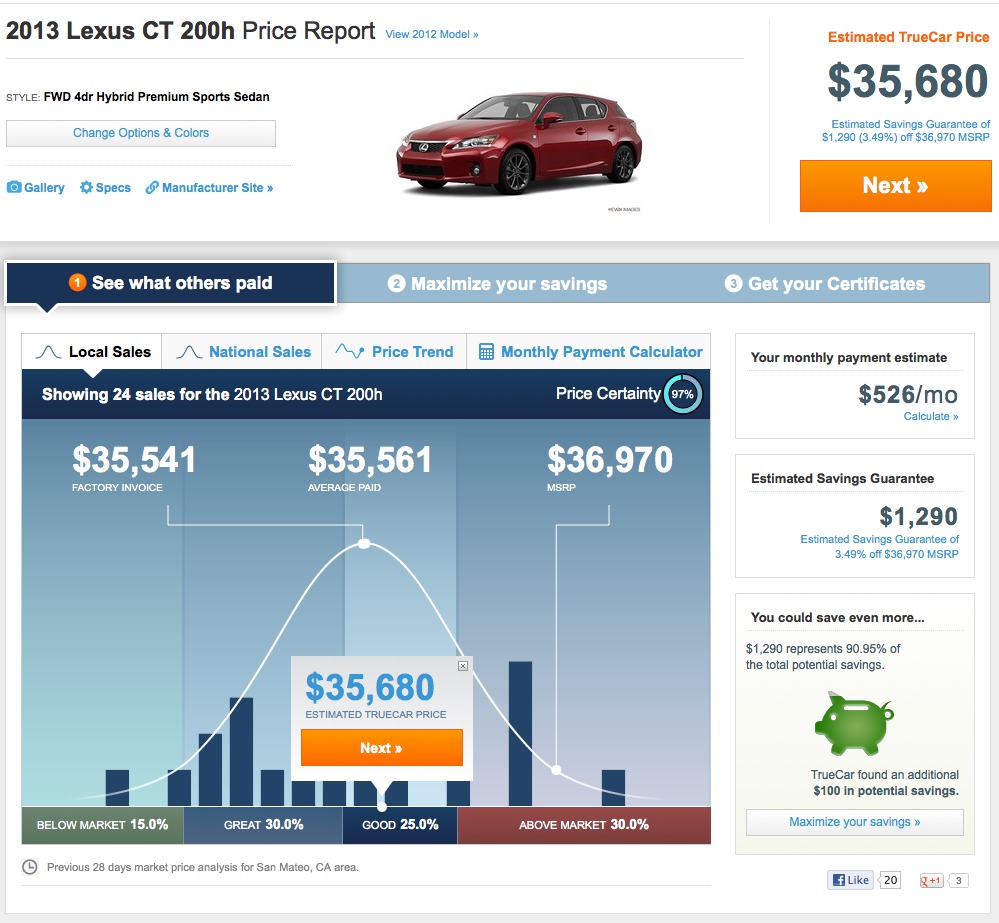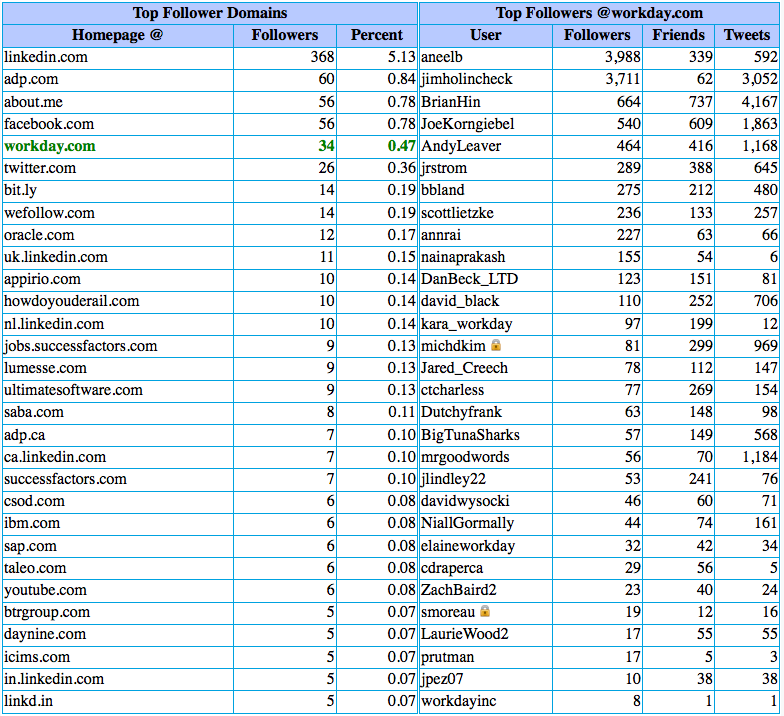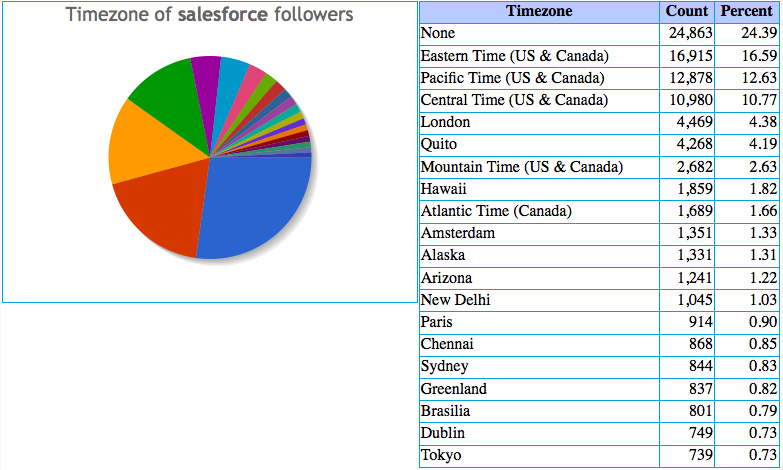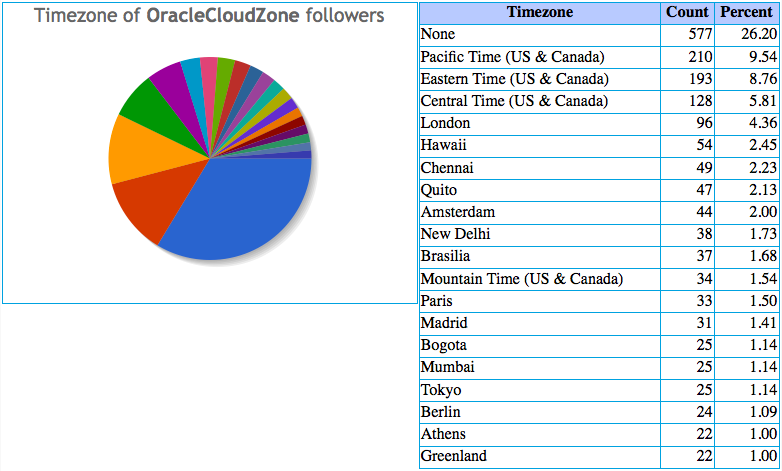As I mentioned in my previous post, I recently bought a new car. I am one of those people who is not really good at haggling. Infact, in this day of the Internet age (I think we need to rewrite the 3-age system to 4-age system :)) who really needs to bargain for the best price? We typically search Amazon, Google and find the best offer and done with it. Unfortunately, that’s not the case with buying cars.
If we can buy a build to order high-end computer over the Internet and get it delivered in less than 5 business days, why can’t that be done with the cars? It’s valid question with an (not necessarily valid) answer. Typically the states laws don’t allow manufacturers to directly sell their cars to the buyers. They have to go via the dealerships. See this article Economic Effects of State Bans on Direct Manufacturer Sales to Car Buyers.
Buying a car requires doing two researches. One is to narrow down to one or two models of cars. Then, figuring out what’s the price that the cars can be purchased for in your local market. The first one is relatively easy especially if you fix a few parameters. In my case, “hybrid” is one of the fixed parameters. Of course, I also had a rough price range in my mind but I was kind of flexible. Though, I am not into vans and SUVs. So, that left me with just hybrid cars and having owned a Toyota Camry, and Prius being the most sought after hybrid and one of the best mileage vehicles, I was initially looking into it. Based on discussions with a few friends and colleagues, I decided to go with the Lexus CT 200h. It was kind of a quick decision. Though, I did a lot of research online about this car and I know it’s pros and cons and I didn’t even had to do a test drive to make the decision. The online material including the brochures on the Lexus website, forums and reviews and Youtube videos were sufficient in my case.
So, I had to focus more on the second part of the research, the price to be paid. Luckily, for this specific car, there are two main threads online, one on clublexus.com and the other on ct200hforum.com where people discussed the prices they have been quoted or paid. Given the various options available for the cars, it’s not exactly an apples to apples comparison. Further given that during November, December time both 2012 and 2013 models were selling actively, it was not easy to figure out what the right price is. But all that research will mentally prepare you to figure out the maximum you are ready to go up to.
When I started my research, a friend of mine said that Costco has an Auto program that can provide a better price. So I went to their website and I should say it’s pretty impressive with all the recent models and their options listed out and they show both the MSRP and invoice price. The invoice showed was about $2k less than MSRP and the website said that the final offer will actually be even lesser than that. I was excited. But then I wanted to find out if there were any other similar programs that can provide haggle-free best price. A few websites do have such program and in fact TrueCar.com even provides a nice graph of what people paid for the chosen car with options. Below is the graph of a sample model I was looking at (the one I bought is a bit different).

We all know there is no free lunch. So, how do some of these websites make money? I came to know via some forum threads that these guys actually get some commission back from the dealers that could be as much as $500 or more (may be depends on the amount of business they bring in). Some suggested that if one can directly go and negotiate, since the dealer doesn’t have to give out the $500 to yet another middleman, that can directly translate into savings for you.
Based on all this research, I decided to give a try of negotiating the price myself but rather than doing it in person and under pressure, I decided to do it via the online sales channel. Essentially, these days most dealers have a separate online sales channel. Some of the dealers actually are combining the fleet sales and online sales into one (will explain why in a bit).
First I submitted to one dealer. Got a reply the next day sending me a link to their “True price”. The email said
“At [dealer-name] we offer a TRUE Price. What this means to you is that we constantly shop our market and competitors, and provide you a competitive price up front – without the hassle of negotiation. Our TRUE Price saves you time and provides a more pleasant purchasing experience.”
When I clicked on that link, it just took me to their regular web page that lists all the cars and their MSRPs. Not a good impression, but may be let’s give it a benefit of doubt that the sales person linked to the wrong page. But in reality, they are just tracking me. The dealer was using eleadtrack.net. I politely replied back saying that I was just taken to the page with MSRPs which I could get from the lexus website itself. Then I got a reply with 4 different configurations and asking me which one I was interested in. I replied back with the one I was interested in. There was no reply during the weekend and then I get an email stating that there were about 20 cars in stock and if I wanted to come and checkit out first. Well, if the “True price” was supposed to offer me no-haggle price that too by constantly shopping the market and competitors, why isn’t the “true price” revealed? The sales person even called and left me a voice message. But that was the last of my interaction with them.
I then submitted my interest to another dealer. I got a response and these guys used responselogix.com to track the leads. The good thing was, in the very first email, I was given a configuration with MSRP and was given “Your Special [dealer-name] Price”. It was $1500 below the MSRP. While it wasn’t the best offer, at least this guy didn’t try to do tricks like the other guy. I exchanged multiple emails with this sales person and narrowed down on price, configuration but we had an issue with the interior color. In this whole process, he even sent me something called “Vehicle Inquiry Report” which is something I saw for the first time. It gives the MSRP and Dealer prices. He was giving me an offer $1K below invoice. However, there was a line item called “TDA” which upon research came to know it stands for “Toyota Dealer Advertisement” fee. Basically, the cost of advertising is passed on to the dealers who try to pass it on to the buyers. If a buyer is buying a car at MSRP or may be even close to Invoice, dealers may not explicitly itemize this cost but if you are bargaining well below invoice price, be prepared to see this as one of the line items which dealers might use to justify an additional fee of about $500.
I thought my negotiation and interaction with this new dealer was going smoothly but towards end of November, he said he doesn’t have the interior color I was looking for and he just has the deal that he sent me. He also said I had to close it by November to get the same price. I then thought it’s probably a pressure tactic. Since I wasn’t in a hurry to buy the car, I just waited out. Also, end of November it was raining and on the last day at 7pm he sent me an email that he was ready to go with the price I offered (which was $500 below what he was trying to get) but I had to close it the same day. I was waiting for him to reach out to me till 6pm so that I could directly go from work but since it was late into night and raining, I just gave up. He probably thought I wasn’t a serious potential buyer. I think he was trying to conn me because the Lexus website showed that cars with my color choice were available within the dealership area.
Then came December and then I thought perhaps negotiating with car dealers is not my cup of tee and probably it’s best I go with the Costco program. I then configured and submitted for quotes. Apparently, the way this was supposed to work is, every dealer would have some fleet car sales persons who typically just push large volume of cars to corporate accounts and there is not so much for them to spend time with the buyer and so the deals are typically much better. And Costco is supposed to have negotiated with some of these dealers and you take a print out of your quote and go to the dealer and meet the contact and then they would provide their special price. Some suggested getting the price on the phone rather than going, some said the dealers could do bait and switch tactics. Anyway, when I submitted it, nothing really happened. I didn’t get any email from any dealers. Also, the dealers Costco suggested after completing the form were farther than my nearest dealer. I wanted a close by dealer.
It was mid-December and I was back to square one. I submitted for a quote to the dealer with whom I was negotiating hoping I would be put in touch with another sales person. But the auto response was from the same guy with whom I interacted. So, rather than submitting via the online form, I then picked another online sales agent and sent an email directly to him. He sent me a configuration along with VIN number and gave me a quote that’s $1500 more than the price I was successfully able to negotiate but again offered the same color that I wasn’t interested in. Then I was like “damn, I lost the color and I lost the price”. But upon talking to the person and explaining him that I got a better offer for the same configuration from their dealership he agreed to honor the same price. Hurray, but still offering the same colors and not the ones I was interested in.
I was doing more research and then when I typed in the VIN number I got a bunch of websites giving me details about the same car. That’s when I came to know that there are websites rankingsandreviews.com that actually list the dealers’ inventory. Then I did a search and looked at all the various CT 200h configurations offered by that dealer. And there wasn’t a single car with the color choices I had in mind. That’s when I realized that these guys are trying to get me buy the other one because they truly don’t have what I was interested in. So, that night I decided to go ahead with the color choice they offered. In retrospect, that combination is actually pretty good. It’s Matador Red Mica and Caramel interior (instead of black interior I was looking for).
During my research, there was an article about fleet car sales and how celebrities actually buy cars without the lengthy negotiation process. Reading that gave me confidence that I was on the right track. I finally managed to get my car at a price that’s almost lowest (I think I could have gone down $500 more) and it beats the best price on the above curve by a wide margin.
Finally, on Friday afternoon I called the sales person, confirmed the price once again, setup appointment and left work a little early and visited the dealer. As soon as I entered the regular sales person greeted me, I told I was there to meet so and so sales person and I was asked to wait and in a few minutes the guy I was dealing with came and we did a test drive and then I was sitting in his office and signing the papers. Due to Lexus’s December to Remember deal I even got 0.9% APR. I have even put a portion of my down payment on my credit card (and a colleague was surprised I could do it).
All in all, a no-stress experience and my research for about a month paid of well. Obviously time is money and perhaps the additional $500 to $1000 I saved may or may not be worth the effort for others. I don’t mean to advice that this is the best route for everyone. It’s still OK to go with one of the other channels but do realize that it’s possible to negotiate below what those channels suggest (inspite a cut to them). The way I see it is, it’s a learning experience about the cars, about the various Internet websites regarding cars and also reviews, opinions and experiences of various people. That to me is priceless, or time well spent.








